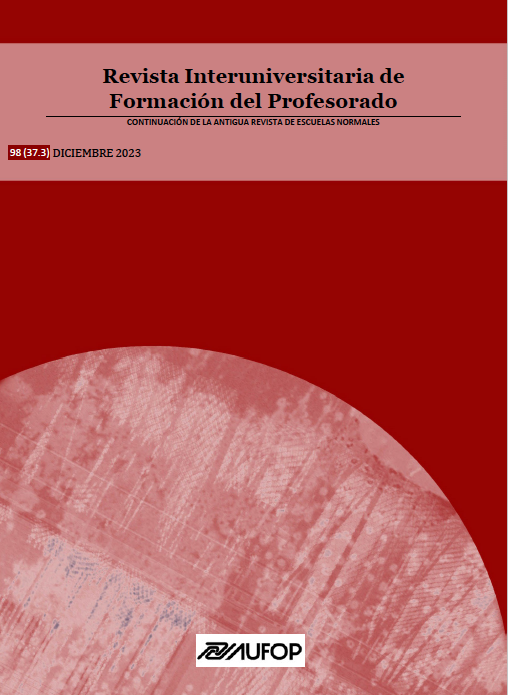Artistic mediation and functional diversity: an approach study to the current context and professional training
DOI:
https://doi.org/10.47553/rifop.v98i37.3.94636Abstract
Artistic mediation offers, through artistic practices, a wide diversity of expression options around the different forms of creation. In addition, it offers a wide range of possibilities to different groups: social, educational and welfare, among others. Through the analysis of a structured questionnaire, a study of the perceptions of 75 participants, professionals from different associations and occupational centers whose activity is aimed at people with intellectual disabilities in different municipalities of the Region of Murcia has been carried out. Their intervention is focused on working through artistic workshops with groups in social exclusion, specifically, associations of people with intellectual functional diversity. The participants in the study affirm, in a decisive way, that they need simple tools to be made available to them that allow them to learn about resources to work through art. In addition, they state that working through mediation represents a change that contributes to overcoming the various barriers that sometimes hinder their inclusion in society.
Downloads
Published
How to Cite
Issue
Section
License
The "Revista Interuniversitaria de Formación del Profesorado (RIFOP)", with ISSN print 0213-8646 and ISSN electronic 2530-3791), adheres to the copyright notices proposed by Creative Commons
Authors’ rights
Papers published in the journal are subject to the following terms:
1. The Asociación Universitaria de Formación del Profesorado (AUFOP) is the editor of the RIFOP and holds the copyright of the papers published therein. The reuse of these is allowed under the license for use as indicated under point 2.
© Asociación Universitaria de Formación del Profesorado (AUFOP)
2. The papers are published in electronic version under the license CreativeCommons Reconocimiento-NoComercial-SinObraDerivada 3.0 España (texto legal). Papers can be copied, used, disseminated, transmitted and publicly exhibited provided that: i) the authorship and original publication source are cited (journal, editors and URL of the paper); ii) they are nit used for commercial gain; iii) the existence and specifications of the license for use are mentioned.
3. Auto-archiving conditions. Authors are allowed and encouraged to disseminate electronic pre-print versions (versions prior to peer review) and/or post-print (versions reviwed and accepted for publication) of their papers prior to their publication, since this favors prompt circulation and dissemination and supposes a possible increase in cites and scope within the academic community.
Privacy declaration
The names and email addresses incorporated into this journal will be used solely for the declared purposes of the journal and will not be available for any other purposes or to third parties.






